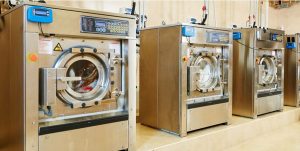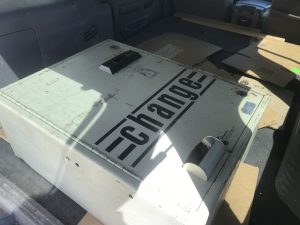How To Clean A RINNAI On Demand Tankless Water Heater
On Demand, or Tankless Water Heaters, run the water through a small heating surface. Like the elements in an electric water heater, these Heat Exchanger Plates can build up with calcium and other deposits and reduce the heating ability of your Water Heater.


As I mentioned in a previous post, Water Heaters- Tank or Tankless, the flow is reduced on a Tankless water heater to maintain the output temperature. So if the heat transfer efficiency is reduced it will take longer the fill your machines and increase the cycle time of the washer.
Cleaning these water heaters involves a couple of hoses, a pump, some vinegar and some time. In the video I explain how the hose connections are set up and, hopefully, you have the correct valves installed that allows you to flush each unit individually without disconnecting any pipes.

It seems like the rubber hoses I used may have broken down a little with the vinegar and there may have been some debris in them as well. I had bought a 25′ garden hose and some new ends so I could cut the hose into the lengths I needed and when I was getting the tools out of my trailer I saw the hoses and thought “That will be easier” as just grabbed them and off I went.

If you are not sure that your hose will be OK in the vinegar cut a small piece and soak it in some vinegar for an hour or two and see if it is sticky, soft or breaking apart.

One thing you don’t want is the hose splitting open and vinegar spraying around.
The directions do recommend that your pump moves 4 gallons per minute. The pump I used was about half that as it was all I could find at a reasonable price. With a little more planning you may be able to find a small electric pump that will meet the requirements like this one HERE.
If you are using a drill pump it will be quite noisy and make sure that the ventilation holes are not covered so it will not overheat.




